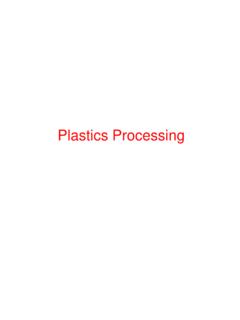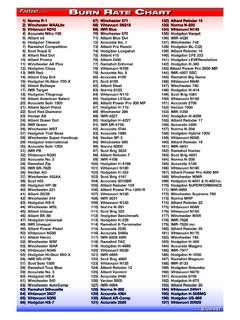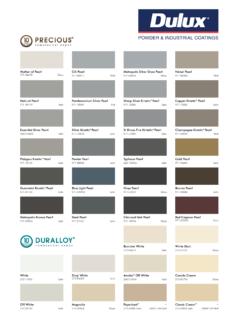Transcription of European Medicines Agency
1 European Medicines Agency 7 Westferry Circus, Canary Wharf, London, E14 4HB, UK Tel. (44-20) 74 18 84 00 Fax (44-20) 75 23 71 29 E-mail: European Medicines Agency , 2010. Reproduction is authorised provided the source is acknowledged Page 1/5 London, 18 November 2009 Doc. Ref. EMA/707229/2009 QUALITY REVIEW OF DOCUMENTS GROUP (QRD) QRD RECOMMENDATIONS ON THE EXPRESSION OF STRENGTH IN THE NAME OF CENTRALLY AUTHORISED HUMAN MEDICINAL PRODUCTS (AS STATED IN SECTION 1 OF SPC, AND IN THE NAME SECTION OF LABELLING AND PL) ADOPTION BY QRD FOR RELEASE FOR CONSULTATION March 2009 RELEASE FOR CONSULTATION 07 April 2009 END OF CONSULTATION (DEADLINE FOR COMMENTS) 29 May 2009 ASSESSMENT OF COMMENTS June-August 2009 FINAL ADOPTION BY QRD 17 September 2009 PUBLIC RELEASE ON EMEA WEBSITE January 2010 ENTER INTO FORCE 01 March 2010 QRD Recommendations on the expression of strength in the name of centrally authorised human medicinal products (as stated in section 1 of SPC, and in the name section of labelling and PL) 1.
2 General considerations Directive 2001/83/EC requires a medicinal product to be labelled as (invented) name + strength + pharmaceutical form . This is considered to be the full name of the product, therefore wherever in this document reference is made to name , it is understood to mean the full name of the product containing the three elements. The active substance is required to be indicated immediately below the full name. According to the Guideline on Summary of Product Characteristics, the strength in the name of a product is the quantity of the active substance which is relevant for the correct identification and use of the product. In addition, it should be consistent with the information given in section 2 (Qualitative and quantitative composition) and section (Posology and method of administration).
3 Consequently, the purpose of the strength in the name of a product is to give the most relevant information regarding the content of the product in view of its use, easy identification and distinction from other presentations, and prescription by the physician, also taking into account other aspects of the medication management process. This is different from the purpose of sections 2 and in the SPC or section 2 of the labelling, where more detailed and analytical information is given about the precise content of the product both in terms of active substance/moiety and finished product. The strength in section 1 should, therefore, be based on user/prescription criteria, rather than on quality/analytical criteria.
4 The level of detail may therefore be different between section 1 and section 2, and it may often not be necessary to include certain redundant information in the strength in section 1 which can be found in other, more technical sections in the SPC/labelling. Where for instance strength in the name will reflect the total quantity of active substance in the container only, other sections in the SPC/labelling will have to contain a clear reference to the total volume and also to the concentration per unit of volume. Similarly, where strength in the name is expressed as a concentration per unit volume, other sections in the SPC/labelling will have to clearly mention the total quantity of active substance and total volume of the product.
5 The accurate reflection of these key elements on the proposed labelling and packaging material by the applicant will be a key aspect during the mock-up and specimen review with the aim to reduce the risk of medication errors. The design applied by the pharmaceutical company should ensure the prominent and unambiguous identification of the key information for the correct use of the product. Based on the considerations above, the experience gained with medicinal products labelling and the workshop held with healthcare professionals in October 2008, the QRD Group proposed some draft recommendations for the expression of strength of different pharmaceutical forms, not only in order to achieve harmonisation across similar medicinal products and pharmaceutical forms, but especially in order to make improvements to Medicines labelling to ensure the correct and safe use of Medicines and minimise medication errors.
6 The EMEA released the QRD recommendations for an external consultation phase and rather extensive comments were received from a broad representation of interested parties. The outcome of the consultation reinforces the fact that there are different practices across the EU when it comes to the labelling of medicinal products, especially for parenteral preparations and products with a multidose presentation. These split views are well acknowledged by all the stakeholders, however the overall message is the wish to achieve a harmonised approach, at least for the centrally authorised medicinal products, and that led the EMEA to eventually release and implement the final recommendations. The recommendations apply only to the determination of the strength in the name of medicinal products and do not automatically affect other regulatory decisions ( policies regarding the system of issuing authorisation numbers, fees calculation, classification of extension versus variation applications, etc.)
7 They will apply to new marketing authorisation applications in the Centralised Procedure as of 01/03/2010, and will not apply retrospectively to authorised medicinal products. However, either at the request of CHMP or on a voluntary basis, MAHs may consider changing the strength of their authorised medicinal products (in the course of a future regulatory procedure requiring assessment), provided that this will not create confusion to patients and healthcare professionals. European Medicines Agency , 2010. Reproduction is authorised provided the source is acknowledged. Page 2/5 2. Recommendations on the expression of strength in the name of centrally authorised medicinal products It is acknowledged that a decision on the most appropriate strength in the name of a centrally authorised medicinal product will have to be taken on a case-by-case basis, and that exceptions to the general rules may be acceptable and/or necessary.
8 In addition to the factors mentioned in point 1 above, there are some additional factors that may have to be considered for the correct determination of the most appropriate strength , the strength used on the labelling of investigational medicinal products in clinical trials1 or the presence of a measuring device. Where a suitable measuring device is included in the pack and there is a single or multiple fixed dose to be administered by means of the device, its impact on the expression of strength should be taken into account. The expression of strength as a percentage should not be used, except when it concerns authorised medicinal products (or a new strength of such product) for which the strength has traditionally been expressed in such a way.
9 The variables used in the table to reflect the different scenarios are defined as follows: x mg/ml = concentration; z mg = total active substance; y ml = total volume; z mg/y ml = total active substance per total volume. Pharmaceutical form Container2 Preferred strength in the name3 Format3 Oral preparations Solid unit-dose preparations ( tablets, capsules) Single dose Amount per unit dose z mg Solid preparations ( granules) Multi-dose Amount per unit weight x mg/g Semi-solid preparations ( oral paste, gel) Single dose Total amount in the container z mg Semi-solid preparations ( oral paste, gel) Multi-dose Amount per unit weight x mg/g Liquid preparations ( ampoule, sachet) Single dose Total amount in the container z mg Liquid preparations ( oral solution)
10 Multi-dose Amount per unit volume x mg/ml Powders/granules for liquid preparations Single dose Total amount in the container z mg Powders/granules for liquid preparations Multi-dose Amount per unit volume after reconstitution x mg/ml 1 Ideally, the same approach to strength should however already be considered for the labelling of investigational medicinal products. 2 A single dose container holds a quantity of the preparation intended for total or partial use on one occasion only. A multi-dose container holds a quantity of the preparation suitable for two or more doses (Ph Eur 6th Edition 2009 ( )). 3 Amount of active substance or moiety, as appropriate. The recommendations also apply to any other units.


















